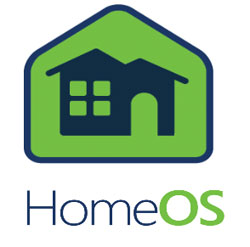One HomeOS To Rule All Appliances
Microsoft behind the scene has been studying and researching different features of the future connected home. Through its Microsoft Connected Home research centre they have been developing a number of products and services for the home of the future. In addition to fancy gadgets and digital lifestyle services they have been researching the idea of developing an operating system (OS) strictly for the home; dubbed the HomeOS. According to Microsoft the HomeOS will “simplify the management fo home networks and the development of applications” for the connected home. To accomplish it will provide a central point to manage, configure and secure you home network.
Sounds good from all angle and I think they are onto a good thing here if they can pull it off commercially. Currently most of our connected home systems connect and communicate through open standards such as PnP, DLNA, Zwave, Zigbee etc., and beyond that it’s a closed box and proprietary based. Getting a central solution is virtually impossible unless the solution is from one supplier.
systems connect and communicate through open standards such as PnP, DLNA, Zwave, Zigbee etc., and beyond that it’s a closed box and proprietary based. Getting a central solution is virtually impossible unless the solution is from one supplier.
Microsoft believes applications will play a greater role in the homes of the future; they are already part of entertaining, gaming, computing, communication, security and our health services. Microsoft thinks these different areas needs some form of “singularity” in management and services. Microsoft in a paper titled, “The Home needs an operating system (and app store)” pointed out some of the issues they would like the HomeOS to address.
According to Microsoft, this new Singularity operating system is to offer a high-reliability environment. It should bear these characteristics: robust, management free, open, real-time performance, secure, accountable and application centre.
The core aim of the proposed HomeOS is to bring everything under one umbrella, to make it easier for the user to manage and control other devices in the home. Microsoft highlighted a current issue where users buy different devices that have their own application and sometime have trouble or find it impossible to get these devices to talk to each other. Moving towards a connected environment this is undesirable for consumer, manufactures and developers.
The proposed HomeOS will have a “kernel that is agnostic to the device to which it provides access, allowing easy incorporation of new devices and applications. HomeOS will “run on a dedicated computer in the home and does not require any modifications to commodity devices,” according to the draft paper. Microsoft has not said if it’s going to be Windows or another operating system they are working on, other than it was built using C# and the .Net framework 4.0.
As a concept, HomeOS has a lot going for it but creating a package solution that will achieve big market recognition is not going to be easy, because it will be going up established whole home solutions – even though they are closed proprietary solutions. Another benefit Microsoft is hoping to add to HomeOS; is to remove the need for an integrator – by emulating Apple’s use of an Appstore.
They are proposing the introduction of a HomeStore, where users can go to download Apps for devices and services. It will complement HomeOS by helping customers to “find Apps that are compatible with their devices and find devices to enable desired tasks that cannot be supported by their existing device alone”.
A prototype of the HomeOS is currently available to academic institutions for teaching and research, no date is release on when it will be available to other areas of the market. To learn more about HomeOS visit the Microsoft research site here: http://research.microsoft.com.